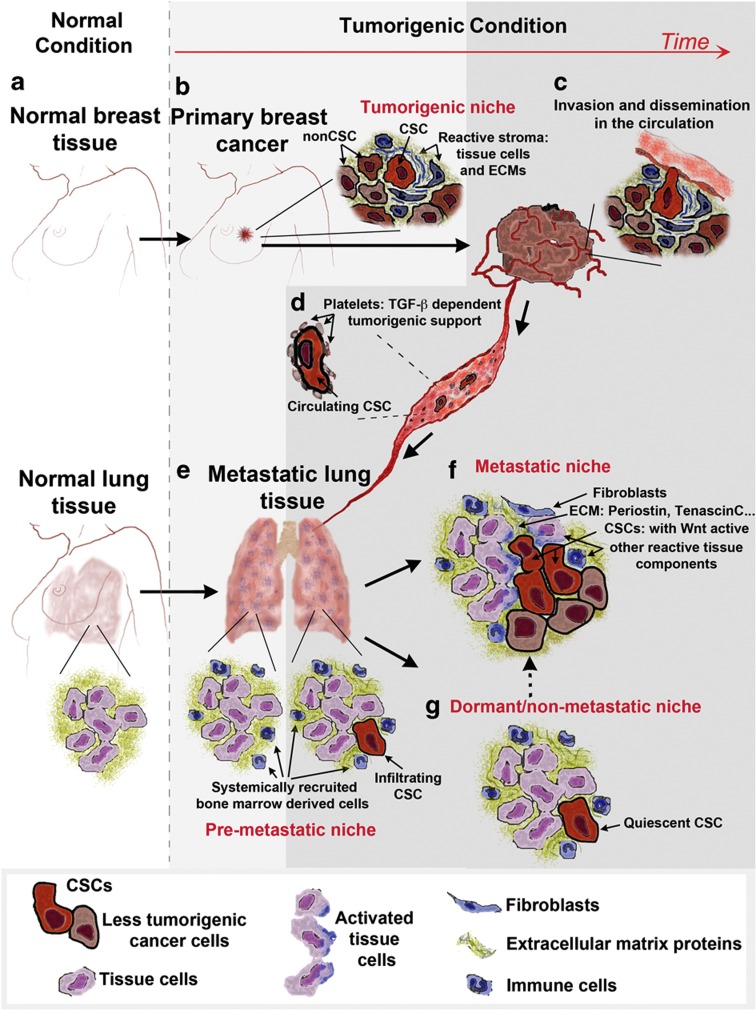Figure 2.
Schematic representation of a breast cancer undergoing a metastatic progression to the lung. The diagram represents the evolution from the normal tissues (a) to the various phases of tumour and metastatic disease progression (b–g). (b) Once a tumour is established within a tissue, cancer cells start growing embedded within their tumour niche constituted by various reactive stromal cells and extracellular matrix (ECM) components. As the tumour progresses, cancer cells are released in the blood stream (c), where in the short period of time in the circulation (d) the disseminated CSCs can also find support on interacting with blood components such as platelets. (e) The process of metastatic dissemination at the secondary site may be helped by the presence of the pre-metastatic niche induced by paracrine signals from the tumour. The crucial event in the success of the process is the establishment of a metastatic niche (f) providing CSCs at the distant site with the favourable extrinsic signals normally produced by the tumorigenic niche at the primary site. At the target site, the choice between metastasis and dormancy will be made by some CSCs according to the successful establishment of this metastatic niche. However, if extrinsic signals allow quiescent niche formation (g), CSCs may persist in the infiltrated organ as dormant cells. Importantly, the dormant niche can potentially be reactivated to become a metastatic niche, where metastatic progression will occur.

